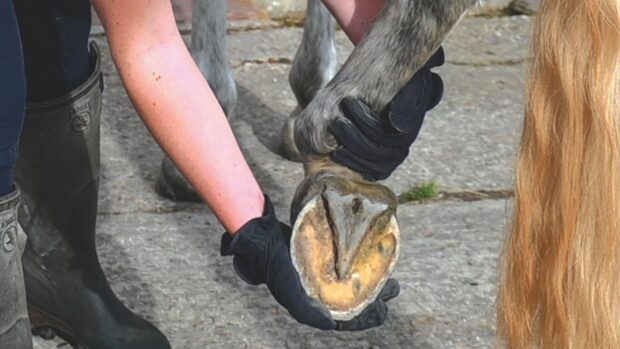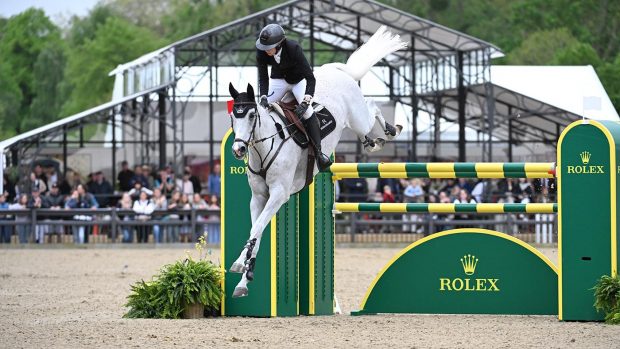Q: A friend’s eventer recently moved to a livery yard where a new farrier re-shod him using shoes with side clips on the front feet. What are the benefits of side-clipped shoes as opposed to shoes with a single toe clip?
MM, Somerset
SIDE-clipped shoes are normally found on hind feet, but it is increasingly common for side clips to be used on the front feet, especially on eventers and endurance horses, said farrier Mark Aikens.
“Hind shoes are side-clipped, as the hind feet tend to have a greater twisting action during stance, which increases the strain placed upon the nails,” Mark explained.
“Side clips ensure the shoe remains where it was fitted by your farrier and allow the shoe to be fitted back under the hind foot, therefore decreasing the risk of a serious overreach injury. It is far better that a horse strikes itself with a rounded toe, as opposed to a metal edge from its hind foot.”
One of the major benefits of using side-clipped shoes on the front feet is that it allows the farrier to artificially manipulate the point of breakover — forces at the toe, medial and lateral heels are collectively at their lowest when the hoof and pastern angles are aligned, which is obviously desirable.
Unfortunately, thoroughbreds are generally predisposed to “long toe/low heel syndrome” and statistics suggest that 77% of racehorses are affected by this conformation.
“Ideally, the hoof and pasterns should be in alignment when viewed from the side, and this is one of the planes of balance a farrier should aim to achieve during shoeing,” said Mark.
“If a horse has a long toe/low heel, or a broken back hoof pastern axis (HPA), it may be unfeasible for a farrier to correct this, as to do so may require an excessive amount of toe to be removed. Removing too much toe may make the horse footsore and will also weaken what is the strongest part of the foot.
“Using side-clipped shoes on the front feet allows the farrier to set the toe of the shoe back behind the toe of the foot, thus reducing the point of breakover, but still maintaining the structural integrity of the hoof.” he said.
“Also, shortening the ‘lever arm’ of the long toe/low heel will improve articulation of the coffin joint, reduce fetlock hyperextension, and reduce strain to the suspensory and flexor tendons.”
Side clips also offer greater stability to weak, “open” feet, that have a tendency to overexpand during stance or weight-bearing.
“Great care must be taken with clip placement, as only in exceptional circumstances should clips be fitted behind the widest part of the foot,” added Mark.
“Side clips should not be hammered into the wall, as this may cause focal areas of pressure within the hoof capsule.”
Information
Mark Aikens DWCF founded Anglia Equine in Norfolk in 1993, and specialises in shoeing event, dressage and endurance horses. www.angliaequine.co.uk
This Q&A was first published in Horse & Hound (17 July, ’08)


